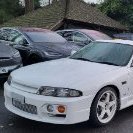Almost Ready To Re Assemble Rb26. Need Some Advice
Announcements
-
Similar Content
-
Latest Posts
-
By GabsReDeal · Posted
Hey everyone, This is my first post apart of the introduction. I tried searching a bit on the forum but couldn't really get a straight answer. I got the car to my mechanic as I felt it being weak. It seems that it was missing on two cylinders due to the injectors. I had all my injectors clean and the car runs much better. The mechanic also confirmed my suspicions that the cat is clogged and needs to be tackled asap. The cat rattles a bit and the hot exhaust warning frequently lights up when driving after getting the injectors clean. In my introduction I was asked about what modification I might be interested in and mentioned a cat delete. From what I was told, this is not really beneficial on the RB20DE and there are more cons than pros. Could perhaps anyone give some suggestions on what the best course of action would be since the current cat is toast and needs to be removed/replaced anyway? I can also sometimes smell a strong smell of fuel, but I'm not sure if this is related. -
When I was replacing my pump due to being stranded in the wrong state, I went with the Deatschwerks 320lph kit. It is a direct plug in to the stock wires, harness, everything. It comes with a plug... but you can plug the OEM plug directly into this thing. https://justjap.com/products/deatschwerks-dw300-fuel-pump-nissan-s13-silvia-r32-r33-r34-skyline-c34-stagea?currency=AUD Downside: Won't actually flow that much on boost if you want to push it on E85, but it's comparable to the 040/255 etc. Little more actually.
-
I dunno what the "best" one is....but when my 040 died late last year, after about 20 years of screaming service....I put in a 255. Like any such thing, you have to finagle it a little bit - it's not a no-brain swap. But it's not hard.
-








Recommended Posts
Create an account or sign in to comment
You need to be a member in order to leave a comment
Create an account
Sign up for a new account in our community. It's easy!
Register a new accountSign in
Already have an account? Sign in here.
Sign In Now